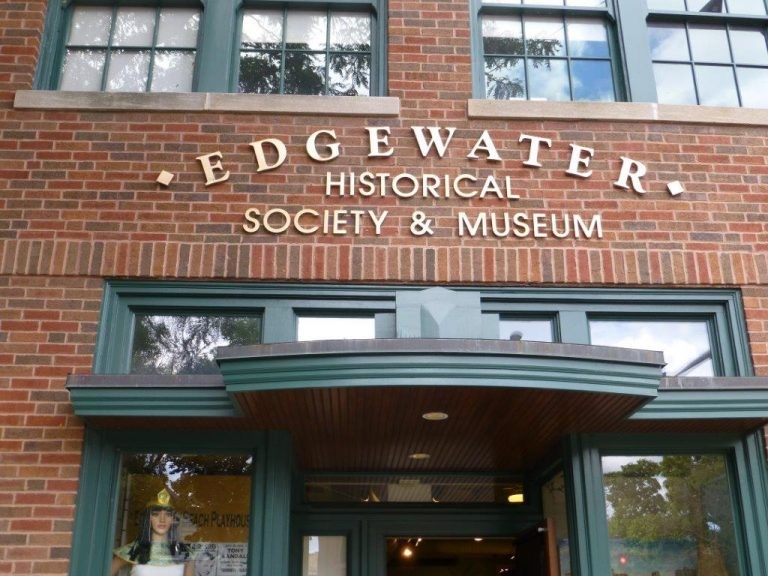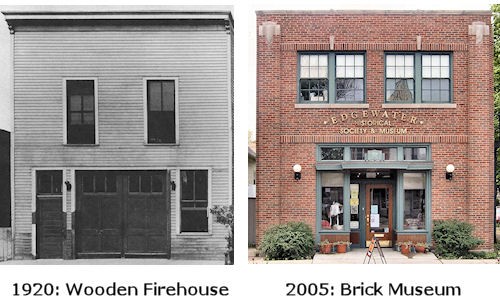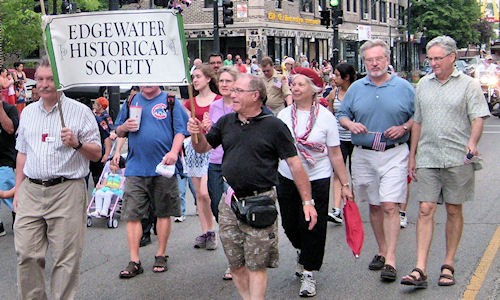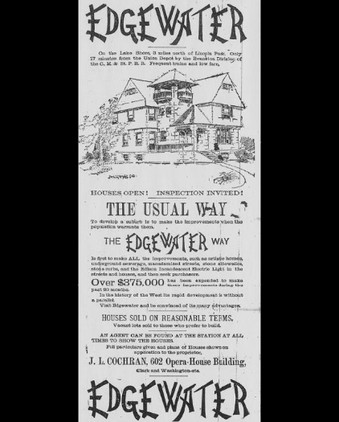Edgewater Historical Society
Introduction
Text-to-speech Audio
Images
Edgewater Historical Society & Museum

The historical building that now houses the Edgewater Historical Museum

Edgewater Historical Society members during the 2010 Memorial Day parade

This 1888 advertisement promoted John Cochran's Edgewater subdivision; the Historical Society uses the same font today in its logo

Backstory and Context
Text-to-speech Audio
A historic district in northern Chicago, Edgewater’s roots emerged as an elite neighborhood in the late nineteenth-century. Initially a rural area with only a few scattered immigrants, in 1886 John Lewis Cochran purchased the area and developed the “Edgewater” subdivision. Cochran envisioned a modern, wealthy community of lakefront homes, and during the construction of Edgewater he gifted it with cutting-edge amenities including sidewalks, electric streetlights, and sewers. The arrival of rail lines further fueled the areas growth, and by the early 1900s the community was a well-known neighborhood for Chicago’s elites.
The neighborhood struggled from overcrowding in the mid-20th century but was revitalized in the 1970s and 1980s (in 1980, Edgewater was declared a distinct community within Chicago). Although the lakefront portion of Edgewater drew wealthy families, the interior neighborhoods within Edgewater fostered rich pockets of ethnic immigrants, including Asian-American “Chinatown North” along Argyle Street and historically Swedish Andersonville along Clark Street.
In 1986, Edgewater celebrated its centennial, and the local Edgewater Community Council gathered oral histories from local citizens. In the wake of this project, in January 1988 the Edgewater Historical Society was founded in January 23, 1988 to with the following goals:
- “involve the community in the research, documentation, collection and preservation of Edgewater History;”
- “promote the study, sharing and enjoyment of that history;”
- “promote the preservation of landmarks and historical structures.”[1]
Early meetings were held in the local library. The Society established the literary newsletter The Edgewater Scrapbook (several issues published annually), offered neighborhood walking tours, and provided tours of local historic homes. In 2002, the Society moved into a former fire station on the corner of Ashland and Balmoral (its current location). Today, the Society hosts various exhibits on Edgewater and Chicago history. They also have a small archive containing oral histories and materials from local civic groups. They are open Saturday and Sunday from 1-4 p.m.
Sources
1. Edgewater Historical Society. 2020. Web. Accessed November 17, 2020. http://www.edgewaterhistory.org/ehs/
2. Amanda Seligman. "Edgewater." Encyclopedia of Chicago. Web. Accessed November 17, 2020. http://www.encyclopedia.chicagohistory.org/pages/413.html
Classic Chicago Magazine: https://www.classicchicagomagazine.com/go-edgewater/
Edgewater Historical Society: http://www.edgewaterhistory.org/ehs/slideshow
Edgewater Historical Society: http://www.edgewaterhistory.org/ehs/slideshow
Chicago Historical Society via Encyclopedia of Chicago: http://www.encyclopedia.chicagohistory.org/pages/3486.html
